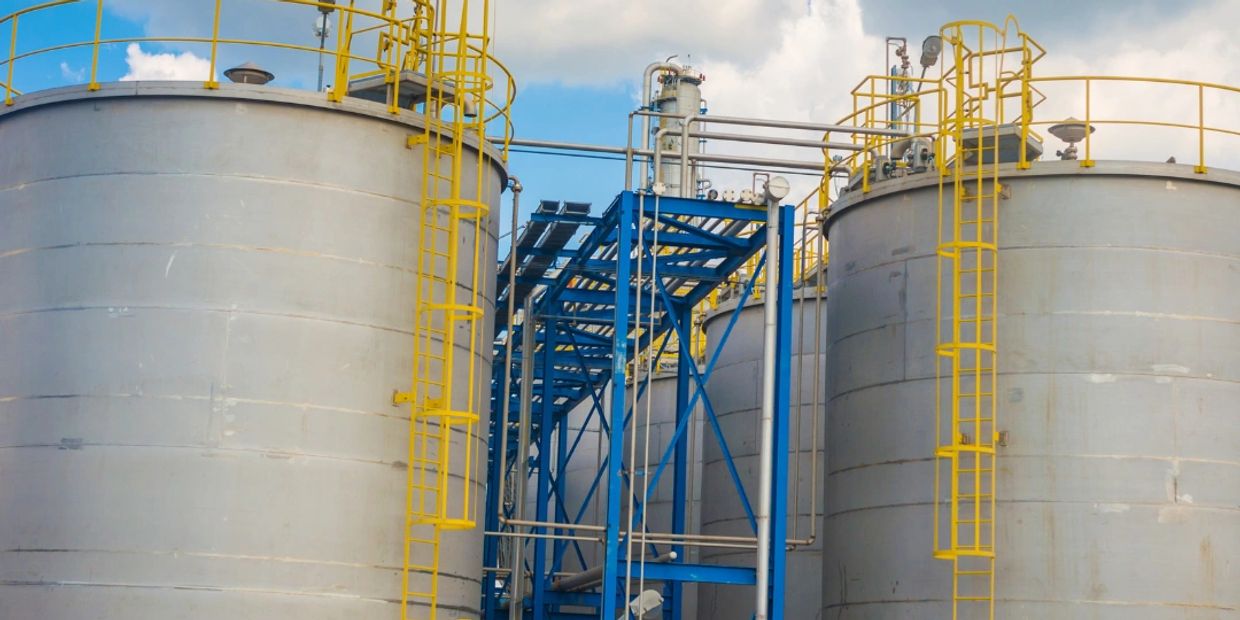A Detailed Overview of Container Welding Evaluation Standards and Methodologies for Improved Weld High Quality and Efficiency
The importance of welding inspection criteria in the production of containers can not be overemphasized, as they offer as the foundation for guaranteeing weld stability and operational dependability. Numerous examination techniques, consisting of aesthetic analyses and advanced non-destructive screening techniques, are important in determining possible problems that can jeopardize performance.
Importance of Welding Evaluation Requirements

Welding assessment criteria encompass a series of standards, including material specs, welding procedures, and certifications of workers entailed in the welding procedure. By applying these standards, companies can methodically recognize and remedy prospective problems, thus reducing the likelihood of costly repairs or devastating failures. Rigorous evaluation methods cultivate a culture of accountability and precision, urging welders to maintain high levels of workmanship.

Typical Welding Examination Methods


Ultrasonic Examining (UT) is an additional prevalent technique, making use of high-frequency acoustic waves to identify interior imperfections that might not show up on the surface. This approach is specifically effective for recognizing voids or incorporations within the weld metal. Magnetic Fragment Evaluating (MT) is likewise widely used, especially for ferromagnetic products, as it exposes surface and near-surface flaws via the application of electromagnetic fields and ferrous bits.
In Addition, Fluid Penetrant Screening (PT) finds surface-breaking flaws by using a penetrant to the weld and after that utilizing a programmer to draw out the penetrant. Each of these strategies contributes to an extensive evaluation method, ensuring that welds satisfy the stringent quality standards called for in tank building and construction.
Regulative Criteria and Conformity
Governing requirements and compliance are vital parts in guaranteeing the safety and security and integrity of bonded frameworks in container building and construction - Tank Welding Inspection. These standards offer to establish minimum demands for material buildings, welding procedures, and evaluation techniques, thus minimizing the risk of architectural failings and enhancing total performance
Secret organizations, such as the American Society of Mechanical Designers (ASME) and the American Welding Society (AWS), offer standards that are commonly taken on in the sector. Conformity with these requirements not just ensures adherence to finest practices but also meets lawful and contractual responsibilities, safeguarding the rate of interests Continued of stakeholders.
Governing bodies usually mandate adherence to specific codes, such as ASME Code Section IX for welding qualifications and API 650 for bonded containers. These codes detail requirements for welding techniques, certifications of personnel, and screening techniques to validate weld integrity.
Routine audits and evaluations are important to keeping compliance, as they assist determine discrepancies from established criteria. Non-compliance can cause substantial charges, job delays, and safety hazards. Therefore, a durable understanding of regulative requirements and a dedication to conformity are extremely important in achieving premium and resilient welded container structures.
Non-Destructive Examining Techniques
Just how can the integrity of welded structures be guaranteed without triggering damage? Non-destructive screening (NDT) approaches supply a durable solution, making it possible for examiners to evaluate weld top quality without jeopardizing the material - Tank Welding Inspection. Amongst one of the most common NDT techniques are ultrasonic screening (UT), radiographic screening (RT), magnetic bit testing (MT), and dye penetrant testing (PT)
Ultrasonic screening utilizes high-frequency acoustic waves to identify internal defects and characterize product homes. It gives specific dimensions and is particularly efficient imp source for thick materials. Radiographic testing includes passing X-rays or gamma rays through the weld, developing images that reveal structural defects such as cracks or voids. This method is important for evaluating the honesty of complex welds.
Magnetic fragment testing is suited for ferromagnetic materials, where electromagnetic fields reveal surface and near-surface discontinuities. Dye penetrant screening utilizes a fluid color to highlight surface-breaking imperfections, making it an effective approach for non-porous products.
Each of these NDT techniques has distinct advantages, permitting extensive evaluations tailored to specific materials and welding processes. By carrying out these strategies, industries can ensure the reliability and safety and security of welded frameworks, eventually improving total performance.
Enhancing Weld Quality With Inspection
Effective examination plays an essential function in boosting weld top quality, offering as a vital checkpoint in the manufacture process. By identifying prospective issues early, inspections alleviate the risk of endangered structural honesty and guarantee compliance with market criteria. Using a combination of aesthetic examinations, non-destructive screening (NDT) approaches, and mechanical assessments, assessors can find problems such as porosity, splits, and insufficient blend.
Applying a durable inspection protocol not just enhances the total top quality of welds but likewise cultivates a culture of linked here accountability amongst welders and makers. Routine training and accreditation of evaluation employees guarantee that they are outfitted with the required abilities to recognize and resolve potential troubles efficiently. This aggressive method decreases rework and connected prices, ultimately adding to forecast efficiency.
Moreover, detailed documentation of inspection findings gives important insights right into recurring issues, helping with constant enhancement in welding methods. By leveraging sophisticated innovations, such as automated ultrasonic testing or digital radiography, weld quality can be enhanced via more precise assessments. In conclusion, a strenuous evaluation procedure is vital in achieving high-quality welds, making sure safety, dependability, and longevity in tank fabrication.
Final Thought
In final thought, the execution of strenuous tank welding assessment criteria and techniques is crucial for making certain weld integrity and efficiency. By making use of a mix of visual inspections, non-destructive screening approaches, and adherence to governing criteria, companies can efficiently recognize and mitigate prospective flaws.